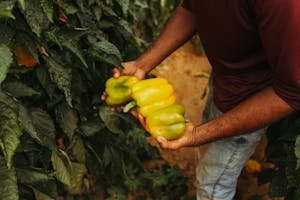Facing the rainy season in cultivating chili plants requires a special strategy so that the plants continue to grow optimally and the harvest is not disturbed. Challenges such as waterlogging, disease attacks, and decreased soil quality are often obstacles for farmers. Therefore, thorough preparation before the rainy season arrives is an important factor in maintaining the success of chili plant cultivation. In this post, I will discuss a few practical steps that can be applied so that chili plants continue to grow well even though they are hit by high rainfall.

The Effect of Rainwater on Chili Plants
Rainwater that is slightly salty can have an impact on the growth of chili plants, especially if it occurs in the long term or if the soil already has salty conditions. Some of the effects of salty rainwater on chili plants include decreasing soil conditions, Salty rainwater can accelerate the decline in soil fertility, soil that is too salty reduces the availability of important nutrients such as phosphorus, potassium, and magnesium, so that chili plants cannot grow optimally.
Increased Risk of Disease High humidity due to rainfall can create conditions that support the growth of pathogenic fungi such as Phytophthora capsici which causes basal stem rot, and Colletotrichum which causes anthracnose can spread faster when the soil is moist and rain is continuous. Making plants susceptible to damage from salty rainwater can also damage the natural wax layer on the leaves, and make the leaves more susceptible to pest infection. If left unchecked, this condition can worsen the condition of the chilies such as leaf curling or leaf spots.

In addition, rainwater can significantly increase the humidity around the plants, including in the cultivation of chili plants. High humidity, especially in the rainy season, can affect chili plants in several ways. Here are some of the effects of increased humidity due to rainfall on chili plants can increase Weed growth high soil humidity also triggers faster weed growth. Weeds can compete with chili plants in absorbing nutrients and water, so they need to be controlled so as not to interfere with the growth of chilies. Physical damage to leaves and fruit caused by continuous raindrops can damage plant tissue. Chili leaves and fruit can experience wounds which then make it easier for diseases or pests to enter.

Then some of the effects of rainwater here will later cause our chili plants to start experiencing some obstacles and can even result in death. In addition to the use of selective fungicides, both systemic and contact, there are some tips that we can try in the rainy season. Such as reducing humidity levels.
Pruning Shoots and Leaves
Prune the water shoots and leaves that are too dense. This will increase air circulation around the plant which in turn helps reduce excessive humidity in the plant area. Pruning also reduces the place for pests and diseases to grow. And for pruning, we can't just do it. There are several ways that we need to pay attention to. Although trivial, there are effects that arise.
Downvoting a post can decrease pending rewards and make it less visible. Common reasons:
Submit